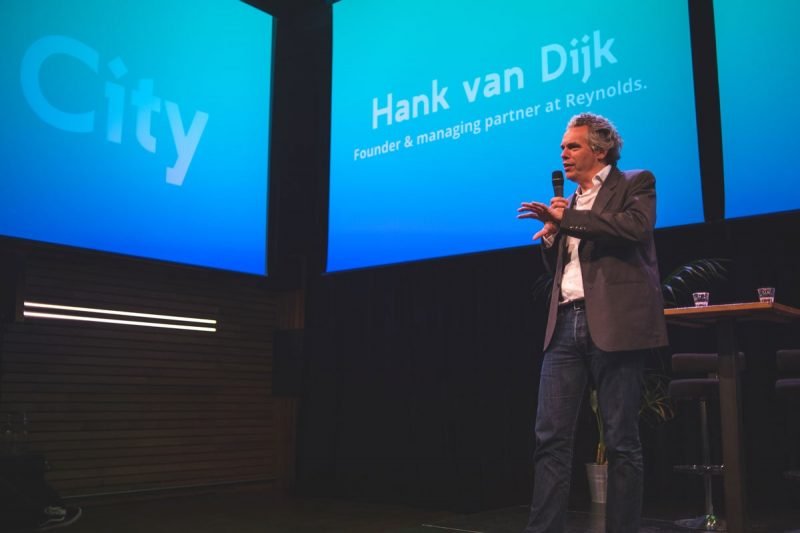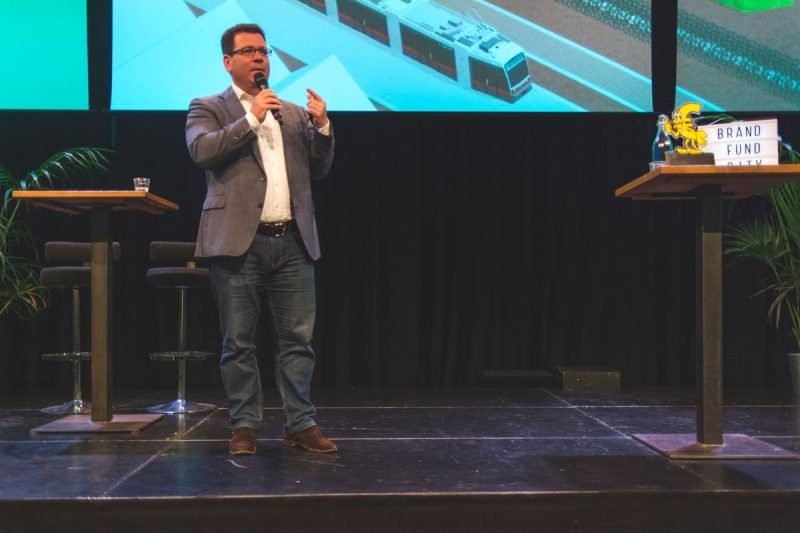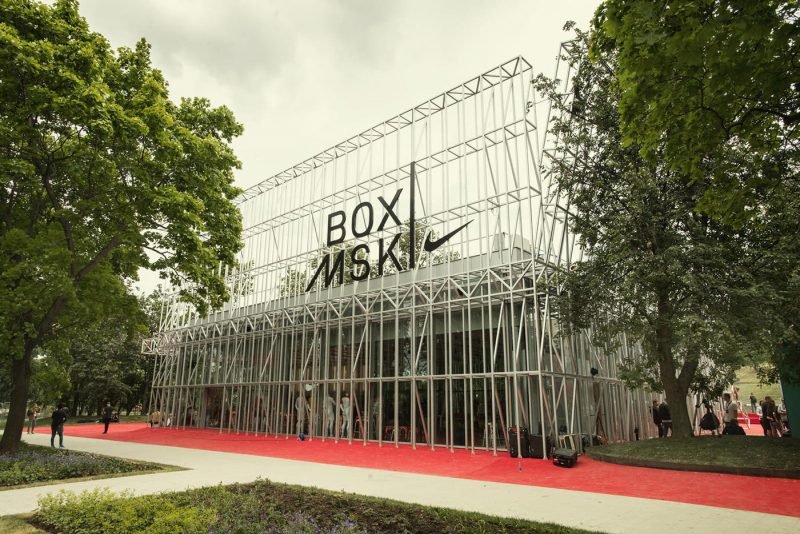Wrapping up a Night of Brand Urbanism
On Thursday 2 June, Pop-Up City organized BrandFundCity — an event at Pakhuis de Zwijger in Amsterdam centered around the trend of brand urbanism, the increasing partnerships between brands and cities.
While the event presented our research and knowledge to the public, it became clear that there is still much more to follow in regards to this idea. Wigger Verschoor of Urban Jungle was our moderator for the night and was certainly not hiding his enthusiasm for brands getting more involved in the urban landscape.

The event was broken up into interviews and live presentations from speakers across the globe. The technological advancements of Skype served us well as we were able to facilitate discussions between Wigger and several people across the Atlantic without strife. John Brady, of Portland’s Bureau of Transportation (PBOT) joined us first to present Portland’s prominent brand urbanism example of their Nike-sponsored bikeshare system BIKETOWN. This lead as a great introduction for Joop de Boer’s presentation next as he explained the definition of brand urbanism and the key features found throughout our research so far.

Next, we were able to speak with both Megan Lee from Southwest Airlines and Philip Winn from Project for Public Spaces who were joining us simultaneously from different regions of the States to discuss their collaboration. The two were even able to watch the event from their end over our livestream and even discuss with one another. Talking about interconnectedness!

Advertising professional Hank van Dijk followed where he reflected on this trend so far and discussed its potential applications to the context of Amsterdam, leading smoothly to our next speaker. Sebastiaan Capel, chairman of the administration committee for Amsterdam Zuid, came to speak to us about the city’s contentious plans for the Heineken-sponsored fountain planned for the area. The fountain plans have received major backlash from the community and have raised many questions about brand urbanism and if it is a reflection of cities “selling out”. While this discussion brought up an interesting question of what happens when citizens oppose brand urbanism? Capel insisted that “it’s not about selling something…it’s about partnership.”

Last but not least, Jesse Jop Jorg presented his upcoming project Parkotheek, a brand-sponsored park equipment-rental program which plans to set up locations in over 100 parks. With its library limited only by the imagination, Parkotheek hopes to provide a community-driven service while staying supported by brands.

All in all, brand urbanism was seen enthusiastically as part of the solution for urban challenges, even on a very local scale. However, feedback continued to echo the importance of quality, good taste, relevance, and balance when implementing these projects. Concerns were also brought up in regards to certain cities being more appealing than others for brand partnership, potentially leading to a divide between struggling cities which are less attractive for investments. Others were more optimistic about this trend, insisting that suitable brand-partnerships were available in all capacities and not all brand urbanism has to take place with multinational corporations, but could also exist with local entrepreneurs.

During the evening, moderator Wigger was secretly counting up the finances that were involved in the projects that were mentioned in the presentations. During his wrap up speech he revealed the amount to be adding up towards 56 million euros, even excluding the Dubai Metro project that in itself already comprised of 500 million euros. It showed that brand urbanism is increasingly becoming a serious theme within urban development involving some serious financing.



